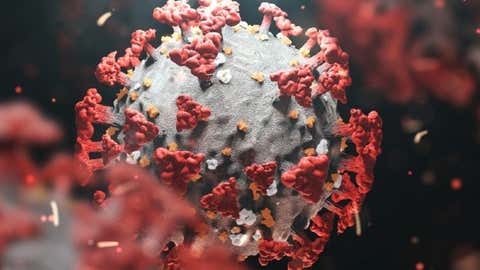Infection
Concerns Ripe Over New COVID Variant BA.2.86 ‘Pirola’; Here’s What Experts Say About It

Representational image
(IANS)
Concerns revolving around the new COVID BA.2.86 began rounds in medical bodies worldwide last week after the variant displayed a staggering number of mutations in its spike protein. The massive difference between this sub-lineage and current circulating ones had a few experts on edge, even in the absence of a significant impact on global public health.
So far, tens of cases of the BA.2.86 — now termed the ‘Pirola’ variant — have been registered across multiple countries, including in the United States, Denmark, Israel and the UK. And the World Health Organisation (WHO) recently placed Pirola under a ‘variant under monitoring’ status due to the large number of mutations (over 35 in its spike protein alone) on the virus.
Why does the BA.2.86 variant stand out?
In addition to the mountain of mutations on the variant that could help it escape the immunity extended from current vaccines and previous infections, there is the peculiar fact that the Pirola variant might have evolved from the Omicron BA.2 variant, which was only in circulation in early 2022 — over a year ago!
For context, most circulating variants are parented by Omicron XBB, the current dominant variant. Pirola has 30 spike protein mutations that differ from XBB.15, which could help the lineage prove more immune-evasive. However, a lack of information and cases is preventing scientists from coming to a solid conclusion on the ancestry matter.
What are the symptoms of Pirola, and is it more deadly?
Most commonly, BA.2.86 presents as a fever in the infected persons, resembling a common cold or a flu-like disease. Other symptoms include coughing, fatigue, head and body aches, a loss of appetite, conjunctivitis, rashes, diarrhoea and breathing difficulties.
It is unclear whether Pirola is more severe than other variants, primarily due to the limited sample size available for analysis. However, the Centre for Disease Control (CDC) ascertains that the BA.2.86 variant might have a greater propensity to infect vaccinated people than other COVID-19 sub-lineages.
As a result, experts are concerned that extra-evasiveness compared to previous strains of the virus could lead to a wave of infections, although cases are limited to a trickle at the moment.
Are current vaccines enough to stop Pirola?
As mentioned earlier, the lack of cases makes studying the new variant and understanding its interaction with our vaccines difficult. However, it is expected that current vaccines should continue to provide some level of protection against the disease and severe illness.
Expert virologist, Jesse Bloom mentions that while BA.2.86 might have some evasion advantages against current vaccines, “broader mechanisms of immunity that are elicited by vaccination and infection” would help protect against severe disease, even if a very heavily mutated variant like Pirola caused the disease.
In addition, vaccine companies will likely continue to keep updating their shots based on emerging variants, and it is recommended to take the appropriate COVID-19 vaccines as outlined by local health authorities.
As for the impact on India, many Indian health experts have reinstated that there is no need for panic. The BA.2.86 variant has not been detected in India as of yet, and our hybrid immunity coupled with Omicron’s longstanding presence in India should ensure minimal impact on India, they reassured.
Treatment and prevention
For the most part, treatment and prevention of the Pirola infection resemble standard COVID-19 procedures, such as wearing appropriate masks, practising hygiene, along with distancing yourself and listening to healthcare professionals when infected. Keeping up with COVID vaccines and boosters is a given.
**
For weather, science, space, and COVID-19 updates on the go, download The Weather Channel App (on Android and iOS store). It’s free!

